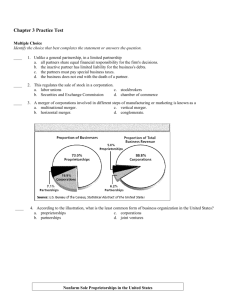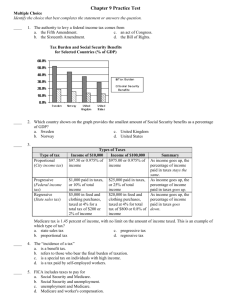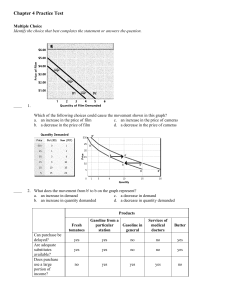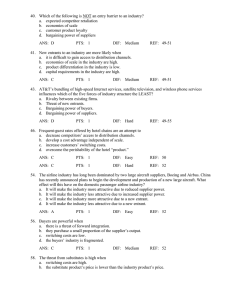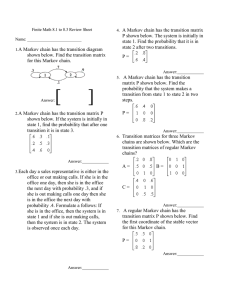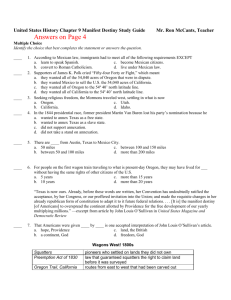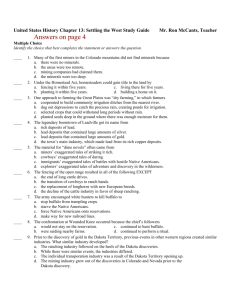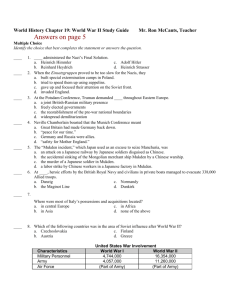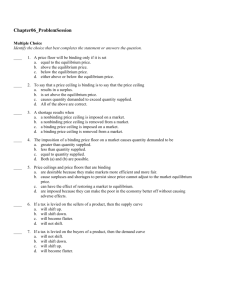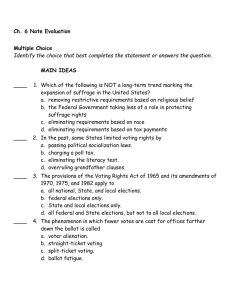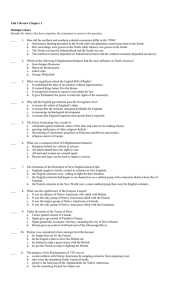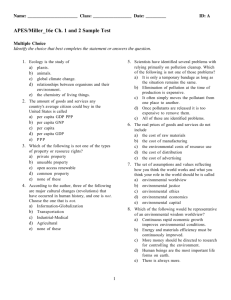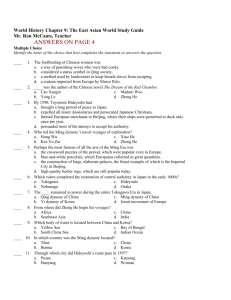Econ Ch. 7 Practice Test
advertisement
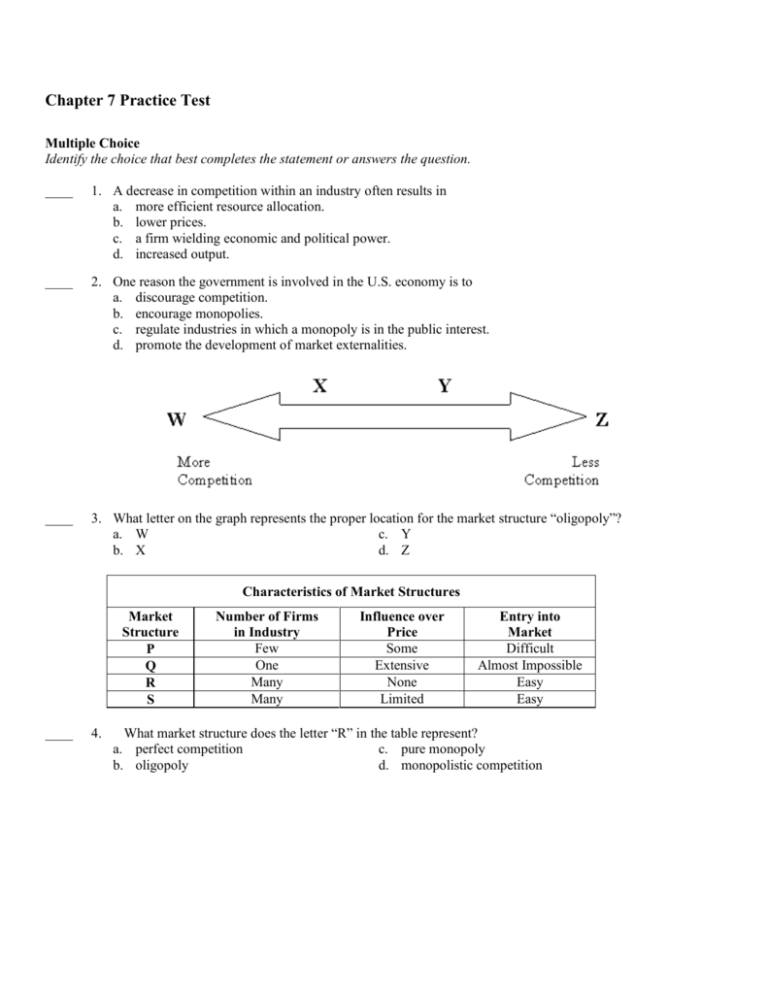
Chapter 7 Practice Test Multiple Choice Identify the choice that best completes the statement or answers the question. ____ 1. A decrease in competition within an industry often results in a. more efficient resource allocation. b. lower prices. c. a firm wielding economic and political power. d. increased output. ____ 2. One reason the government is involved in the U.S. economy is to a. discourage competition. b. encourage monopolies. c. regulate industries in which a monopoly is in the public interest. d. promote the development of market externalities. ____ 3. What letter on the graph represents the proper location for the market structure “oligopoly”? a. W c. Y b. X d. Z Characteristics of Market Structures Market Structure P Q R S ____ 4. Number of Firms in Industry Few One Many Many Influence over Price Some Extensive None Limited Entry into Market Difficult Almost Impossible Easy Easy What market structure does the letter “R” in the table represent? a. perfect competition c. pure monopoly b. oligopoly d. monopolistic competition ____ 5. Which letter in the illustration represents the proper location for the Clayton Antitrust Act? a. W c. Y b. X d. Z ____ 6. What law should replace the letter “Z” in the illustration? a. Clayton Antitrust Act c. Robinson-Patman Act b. Sherman Antitrust Act d. Federal Trade Commission Act ____ 7. The Clayton Antitrust Act a. was opposed by labor unions. b. defended monopolies. c. outlawed price discrimination. d. never went into effect. The Federal Trade Commission (FTC) reviews mergers to ensure that they do not substantially lesson competition. The agency certainly was busy in 1998. In that year, the number of announced mergers involving American companies exceeded 7,750. A survey conducted in 1999 suggests that the FTC’s workload will not dwindle in the near future. Of the companies polled in the survey, more than one third said that they intended to acquire other companies within the year. Source: Bergen Record, April 23, 1999. ____ 8. This passage suggests a trend toward a. decreased competition. b. greater competition. c. more power for the Federal Trade Commission. d. deregulation. A rose is a rose is a rose, wrote Gertrude Stein. But don’t tell that to flower sellers who are trying to differentiate themselves from their fellow petal-pushers. To stand out in a crowd, U.S.A. Floral Products, the nation’s biggest flower distributor, is test-marketing a plan to sell flowers sporting a tag telling consumers the last date the flowers can be sold for maximum freshness—the equivalent of a “sell by” date on a quart of milk. Source: Business Week, February 15, 1999. ____ 9. Based on the passage, U.S.A. Floral Products is differentiating its product from competitors’ by trying to convince customers that its roses are a. more red. c. less expensive. b. fresher. d. higher quality. ____ 10. In the graph, suppose the firm increases production to 148 units. This will result in a. an increase in total profit. c. an increase in marginal revenue. b. a decrease in total profit. d. a decrease in marginal revenue. Chapter 7 Practice Test Answer Section 1. ANS: REF: 2. ANS: REF: 3. ANS: REF: 4. ANS: REF: 5. ANS: REF: 6. ANS: REF: 7. ANS: REF: 8. ANS: REF: 9. ANS: REF: 10. ANS: REF: C PTS: 1 DIF: Average Learn more about this question in Economics Principles and Practices, page 180. C PTS: 1 DIF: Average Learn more about this question in Economics Principles and Practices, pages 186-189. C PTS: 1 DIF: Average Learn more about this question in Economics Principles and Practices, page 174. A PTS: 1 DIF: Average Learn more about this question in Economics Principles and Practices, page 170. B PTS: 1 DIF: Average Learn more about this question in Economics Principles and Practices, page 186. C PTS: 1 DIF: Average Learn more about this question in Economics Principles and Practices, page 186. C PTS: 1 DIF: Average Learn more about this question in Economics Principles and Practices, page 186. A PTS: 1 DIF: Average Learn more about this question in Economics Principles and Practices, page 186 B PTS: 1 DIF: Easy Learn more about this question in Economics Principles and Practices, page 173. B PTS: 1 DIF: Average Learn more about this question in Economics Principles and Practices, page 171.



